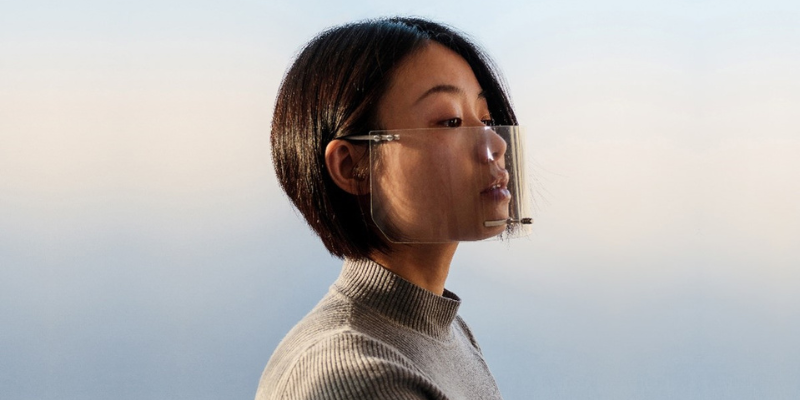Introduction
Discomfort is very common in social situations, especially when one feels like an outsider. Imagine being surrounded by a language and culture vastly different from your own, facing authority you struggle to communicate with and stand up to. How do you respond to unfair treatment when the odds are stacked against you? For Yi-Fei Chen, the solution was art, specifically her renowned ‘Tear Gun Project’, and one of the receivers of the tear shot was none other than the head of the department at her institution, who took it at Chen’s graduation- marked the artist facing the very same authority that had prompted her to make the piece in the first place.
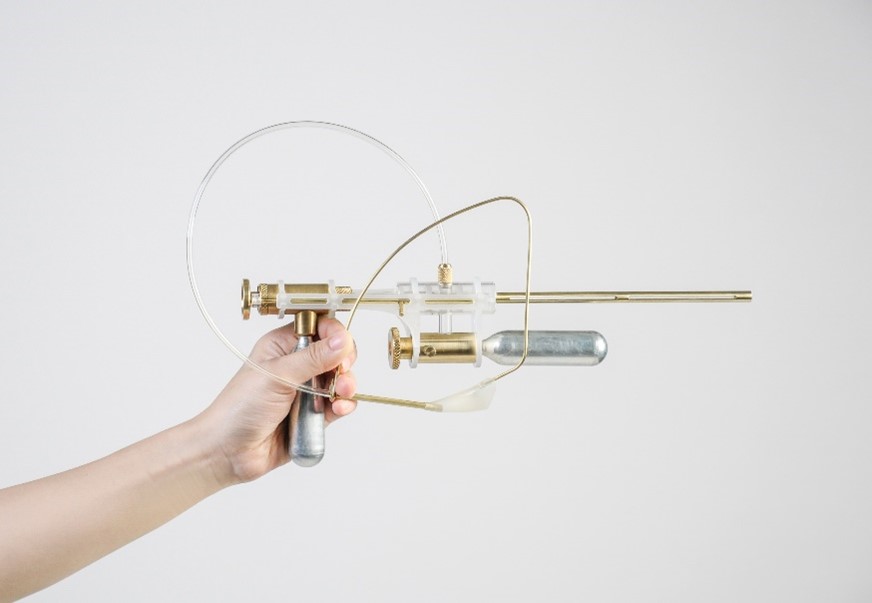
Source: Fei Studio
How Did ‘Tear Gun’ Come About?
A Taiwanese student of Design, Chen talks about the pressure of being a foreigner, while attending school in the Netherlands. Learning at the Design Academy in Eindhoven, she faced difficulties in accommodating its style and culture of teaching. Previously, as a student in Taiwan, she had been under a system that highly respected the authority of the teacher and the institution, which she was now asked to question and counter as per the Academy’s approach. One incident was particularly bad- a tutor had asked Chen to meet an unreasonable deadline. She wished to protest against it but was unable to do so even when asked to explain her inability to meet it, while a friend tried to communicate the issue, Chen remembers beginning to cry, standing with her back to the class.
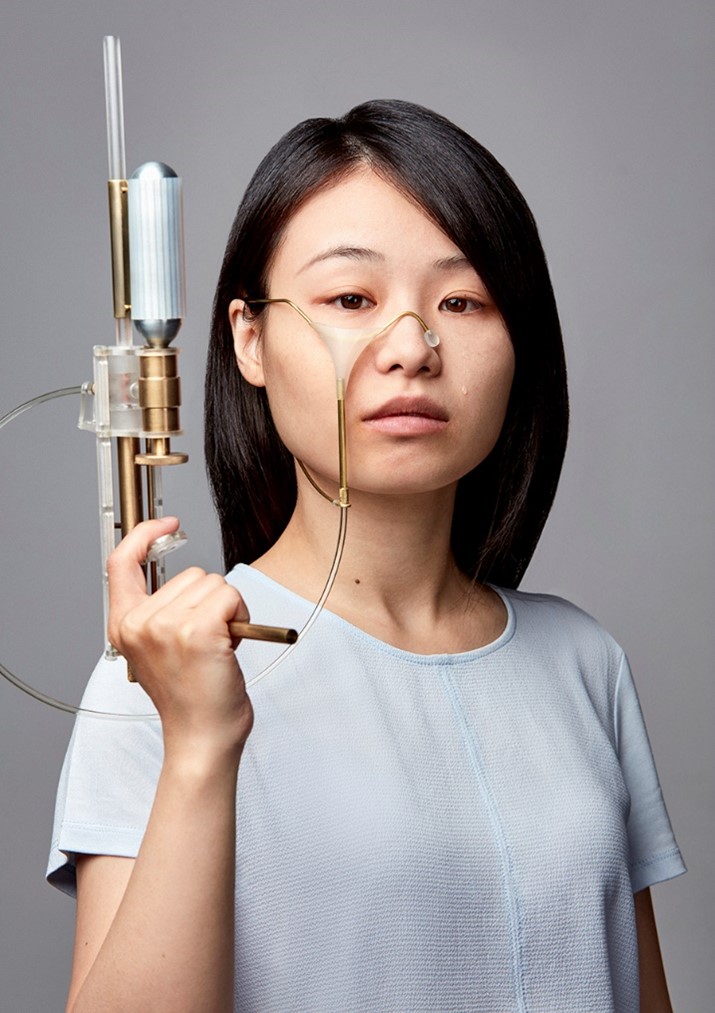
Source: Fei Studio
The incapability to defend herself and stand up to authority led to the creation of the idea of a tool that would convey her discomfort and act as a means of defending her. The design involves a pistol with several parts that work together to achieve the desired outcome. First, there is a silicon funnel with a tube that can be laid against the face of an individual. It is this pocket that collects the tears that slip down a person’s face. Then, the tears are frozen by a brass bottle of dry ice that freezes it immediately, before finally being shot out of the gun in its frozen form.
Executing the ‘Tear Gun’- What Does it Stand for?
As a concept designer, the works by Chen often speak volumes in terms of need, cause of origin and the necessity for their creation. They traverse the space between languages and cultures efficiently where images and interpretation may not suffice. The tear gun acts not only as a mechanism of defence that shields her but also as a tool that helps both the artist and those surrounding her to understand how a situation truly made her feel, where using language had failed. This portrayal of emotion is enabled by the use of the gun as a carrier of action, something that speaks up for the owner when they struggle to do so themselves.
The gun also acts as a preserver of identity through its encouragement of individual action and thought. There is a decision-making factor involved that places the self against the other, allowing the user to choose themselves. It validates individual pain and emotion and also allows its tangible usage. The politics of identity in the ‘Tear Gun’ project also involves a reclamation. As Chen recalls the incident, her politeness seemed to have become her weakness, and her tears became proof of her lack of emotional control. The Gun, alternately, makes them the weapons in her arsenal- they transform from the original sense of frailty assigned to them, instead becoming what is able to retaliate. They act as responses that could not have been given previously- thus, Chen finds through her designs, a way to both embody herself and also to express aspects of herself that could not have been previously.
Exploding Seats: Chen’s ‘Excuse Me: A Social Escape Tool’
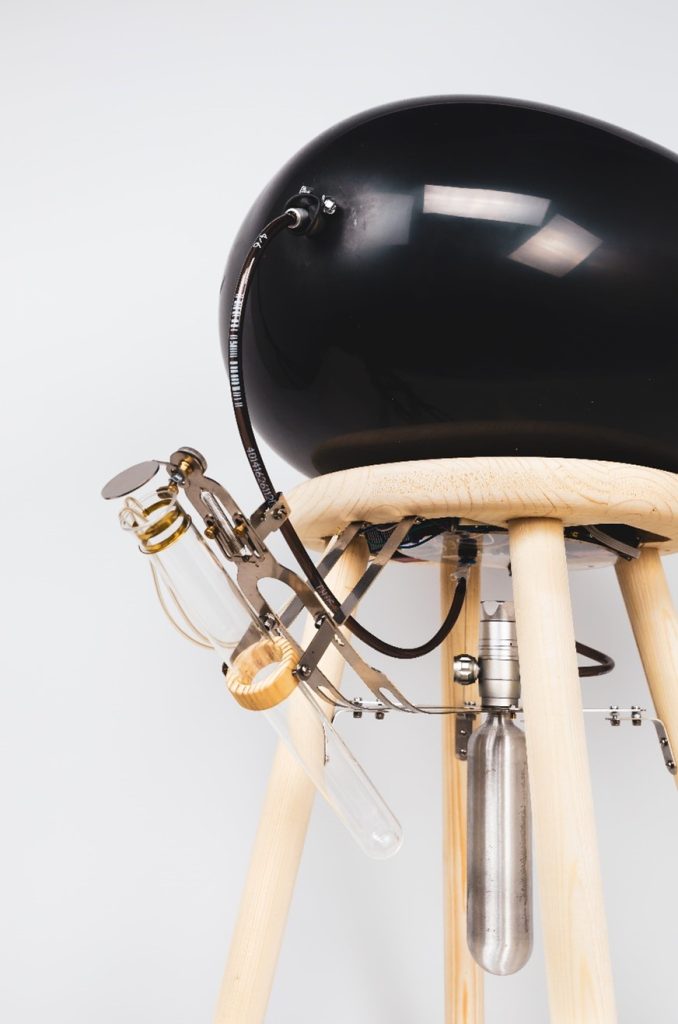
Source: Fei Studio
The art made by Yi-Fei Chen relies on the execution of concepts, they offer not just aesthetic appeal but innovative solutions. These solutions also perform the additional task of making some viewers wonder why they were necessary in the first place, hence, opening up perspectives their minds had not viewed before. Social interactions and social behaviours, as seen in ‘Tear Gun’, often take central positions in the works of Chen. Another interesting piece by the artist is, ‘Excuse Me: A Social Escape Tool’, a sitting stool that is described as the perfect tool to rescue yourself from a social situation you are not comfortable in. Filled with beans, the stool’s cushion begins to expand the moment weight is applied to it. The only way to reduce its size back to normal? Pouring water into the test tube at the bottom of the stool, and going to fetch water for the stool, according to the piece, is a valid reason to exit an overwhelming social scenario. Sitting on the stool for too long can lead it to explode, scattering beans everywhere, This too can be the perfect excuse to leave the room and hunt for cleaning supplies, perhaps. A poetic and hilarious creation, the stool, described to be resembling a ‘needy pet’, plays on the awkwardness many of us experience in social settings. In Asian cultures especially, it is harder to leave a gathering without a valid cause and there is less space to truly express individual thought due to the value given to community and time spent together. Chen connects this cultural understanding of careful expression, with the differences and similarities in European cultures through the humour and exaggeration in her piece.
Face Masks and Sanitisers as Accessories?
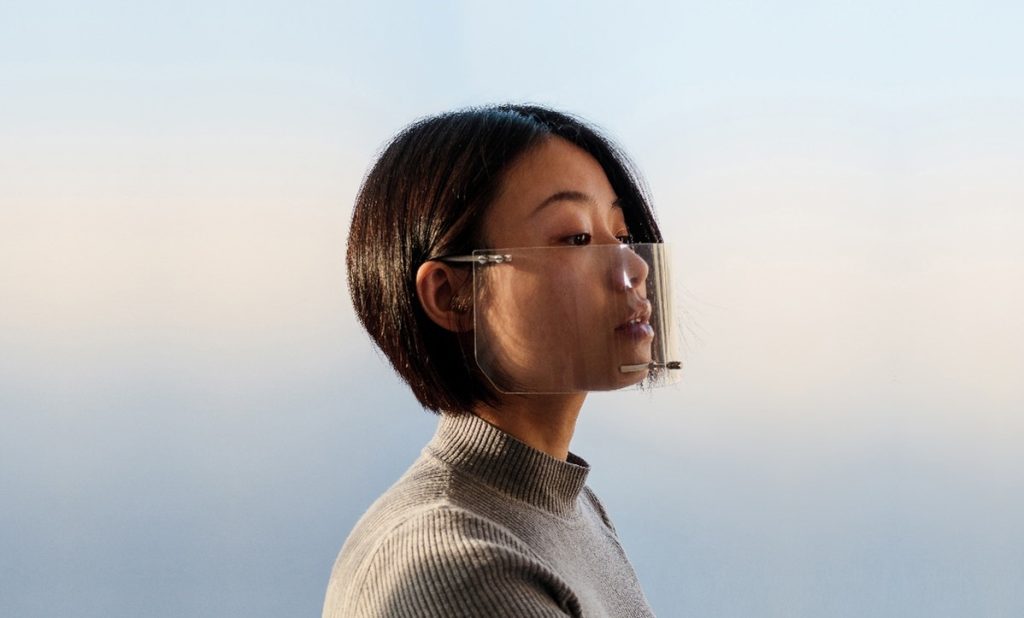
Source: Fei Studio
In her ongoing project, ‘CoV 19: Prevention as High Fashion Accessory’, Chen once again explores the contrasts and similarities between the Asian and Western cultures in the preventive measures employed during the pandemic. Wearing masks, for example, was seen as a restriction on personal freedom and identity in the West, covering one’s face specifically, seemed like the loss of selfhood. In most Eastern countries, however, masks were worn even by healthy individuals to prevent the spreading of the virus- here, it was about safeguarding the community, or as an idea described in the piece, “I protect you, and you protect me, and we are all safe”. The perfect midway point is offered by Chen, transparent half-face shields that are more like high fashion accessories. The line also includes what appears to be a hand brace with an attached sanitiser among others, too. The transparency allows it to retain identity, while its incorporation as a fashion accessory might make the precautions more popular choices.
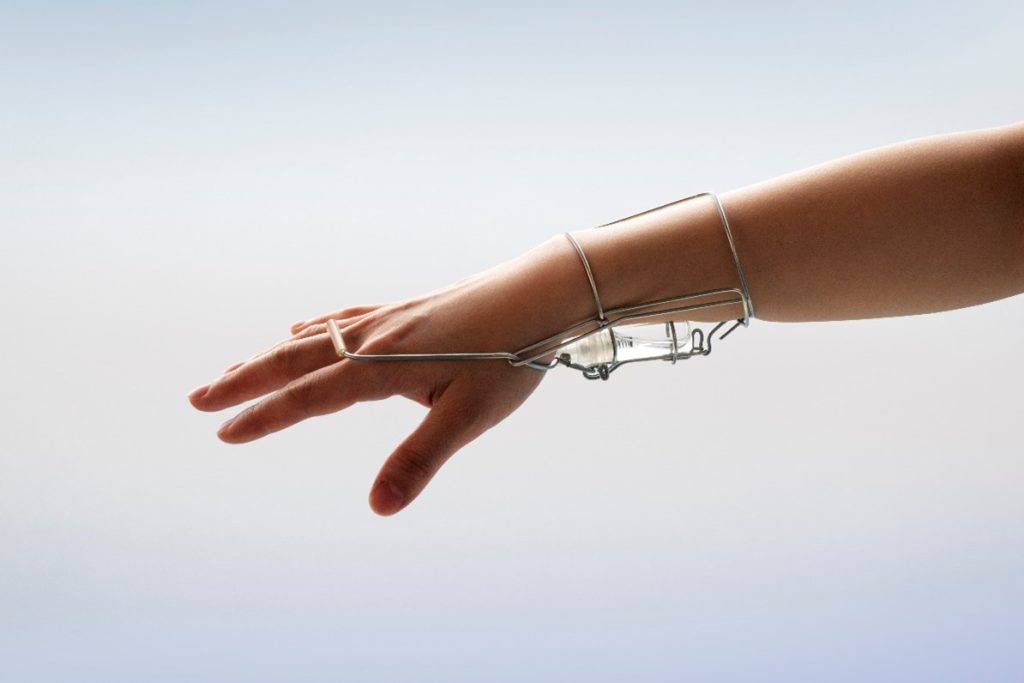
Source: Fei Studio
Beginning with ‘Tear Gun’ which used tears as a medium of self-defence, Yi-Fei Chen’s work has time and again prioritised human behaviour, thought and emotion. They depict sensitivity, strength, awkwardness and more through humour, critique, and commentary. While they are not to be seen as solutions, the projects definitely offer an insight into the different ways of seeing the world. They allow to glimpse the struggles fellow humans go through, to understand the consequences of action and very importantly, join people together in their everyday difficulties- be it discomfort in a social situation or learning to speak up for yourself.
SOURCES:
- Dezeen-Tear Gun Yi Fei Chen Design Academy Eidhoven Dutch Design Week
- Yi Fei Chen- Webflow.io
- Ignant- Tear Gun by Yi Fei Chen
Read Also:
The Coloured Threads of Craftivism: Narratives of Power and Protest

Contributor

